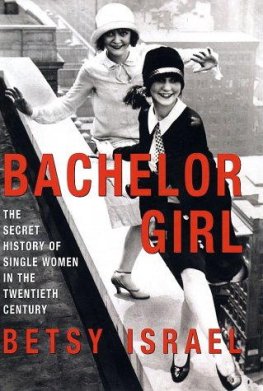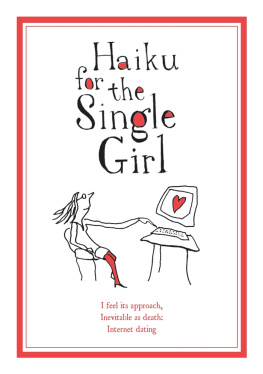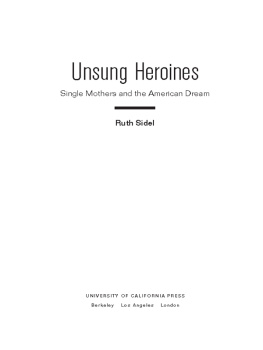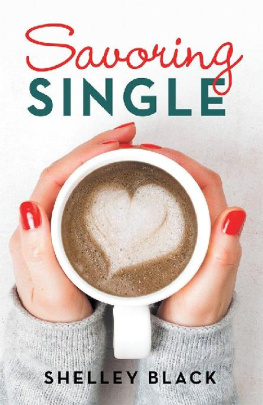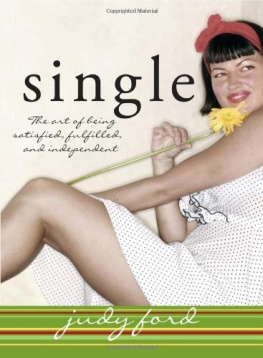This book would not exist without the foresight, goodwill, and patience of two extraordinary people. My agent, Susan Ramer, has been with me through three proposals, five drafts, and an epic spell of writers fog. She has devoted so much time to this project, worked through so many of its problems, and been such a wonderful friend that I cannot thank her enough. Jennifer Hershey is the most thoughtful, good-natured, and enthusiastic editor Ive ever worked with. She helped me to find a way through what seemed a great dark mass of material and never did she doubt it would take shape. Despite an enormous workload, she personally edited this book down to the tiniest detail. Maureen OBrien, a terrific editor and good pal, saw Bachelor Girl through to its conclusion and ace publicist Jessica Miller worked tirelessly to get it read. I am indebted to my research assistant, Jeryl Brunner, the woman who can find anything, anywhere. Thanks, too, to Jeanine Barry, Carleen Woolley, and Ariana Calderon for their assistance and fact-finding. Donna Brodie at the Writers Room gave me much-needed early encouragement, and Amy Gross offered me the chance to write about single women, in Mirabella . Thanks, too, to all the friends, colleagues, and relatives who have listened and commented throughout. In particular I am grateful to my husband, Ezra Doner, and to Nan Friedman, Betsy Zeidman, Priscilla Mulvihill, Lorraine Rapp, Fleur and Sheldon Israel, the late Alex Greenfield, Sally Hines, and Dalma Heyn; to Teriananda, who took care of my household; and to Susannah Israel Marchese, who had an easy answer to my hardest question. My beloved Hayley and Timothy have been more tolerant and patient than any children should ever have to be. Finally, my inestimable thanks to the many women who so carefully and honestly described their lives as bachelor girls.
B ETSY I SRAEL is a journalist and former editor who has contributed to the New York Times , Elle , Rolling Stone , GQ , Harpers Bazaar , Redbook , People , Mademoiselle , Vogue , New York , Spin , Playboy, and the Los Angeles Times , among many others. She is a former columnist for Glamour , US, and New York Woman, and was a contributing writer for Mirabella . She has written numerous screenplays and is the author of a memoir, Grown-Up Fast: A True Story of Teenage Life in Suburban America . She lives in Manhattan with her husband and two children.
Visit www.AuthorTracker.com for exclusive information on your favorite HarperCollins author.

Australia
HarperCollins Publishers (Australia) Pty. Ltd.
25 Ryde Road (PO Box 321)
Pymble, NSW 2073, Australia
http://www.harpercollinsebooks.com.au
Canada
HarperCollins Publishers Ltd.
55 Avenue Road, Suite 2900
Toronto, ON, M5R, 3L2, Canada
http://www.harpercollinsebooks.ca
New Zealand
HarperCollinsPublishers (New Zealand) Limited
P.O. Box 1
Auckland, New Zealand
http://www.harpercollins.co.nz
United Kingdom
HarperCollins Publishers Ltd.
77-85 Fulham Palace Road
London, W6 8JB, UK
http://www.harpercollinsebooks.co.uk
United States
HarperCollins Publishers Inc.
10 East 53rd Street
New York, NY 10022
http://www.harpercollinsebooks.com
A study of single women relies heavily on the accomplishments of womens historians. These academics and agitators have taken what was, twenty-two years ago, during my student years, a loosely organized post-sixties discipline and turned it into a recognized field of remarkable scholarship and theory. The body of historical works is at this point so vast that it is physically impossible to list all the books and articles I have consumed over the years and that have influenced my thinking about single women. But I include in the following notes the primary texts I consulted for each section of Bachelor Girl, any document Ive quoted from, and a few related works that I think, or hope, will be of interest.
There are many excellent overviews of womens history. I used the following: Sarah Evans, Born for Liberty: A History of Women in America (New York: Free Press, 1989); Mary P. Ryan, Womanhood in America: From Colonial Times to the Present, 3d ed. (New York: Franklin Watts, 1983); William Chafe, The Paradox of Change: American Women in the Twentieth Century, a 1991 reworking of his earlier The American Woman: Her Changing Social, Economic, and Political Role, 19201970 (New York: Oxford University Press, 1972); Nancy F. Cott, ed., Root of Bitterness: Documents of the Social History of American Women (New York: Dutton, 1972); Renate Bridenthal and Claudia Koonz, eds., Becoming Visible: Women in European History (Boston: Houghton Mifflin, 1977); Nancy F. Cott and Elizabeth Pleck, eds., A Heritage of Her Own: Toward a New Social History of American Women (New York: Oxford University Press, 1984).
A few more finely honed time periods: Mary Beth Norton, Libertys Daughters: The Revolutionary Experience of American Women, 17501800 (Cambridge: Harvard University Press, 1980); Margaret Fuller, Women in the Nineteenth Century (1855; New York: W. W. Norton, 1971); Elaine Tyler May, Great Expectations: Marriage and Divorce in Post-Victorian America (Chicago: University of Chicago Press, 1980).
On the history of feminism:
The standard reference and most frequently assigned womens history text is Eleanor Flexner, Century of Struggle: The Womans Rights Movement in the United States (1959; New York: Atheneum, 1970); Rosalind Rosenberg, Divided Lives: American Women in the Twentieth Century, American Century series, Eric Foner, ed. (New York: Hill and Wang/Noonday Press, 1992), is invaluable for its analysis of the parallel struggles of black and white women, individuals, and activists; Nancy F. Cott, The Grounding of Modern Feminism (New Haven: Yale University Press, 1987); Elizabeth Cady Stanton, Eighty Years and More: Reminiscences 18151897 (1898; New York: Schocken, 1971); Elizabeth Cady Stanton/Susan B. Anthony: Correspondence, Writings, Speeches (New York: Schocken, 1981); William P. ONeill, Everyone Was Brave: A History of Feminism in America (Chicago: Quadrangle, 1969); Mari Jo Buhle, Women and American Social ism, 18701920 (Urbana: University of Illinois Press, 1978); Linda Gordon, Womans Body, Womans Right: A Social History of Birth Control in America (New York: Grossman Publishers, 1976). And for all those ages twenty-one to twenty-eight who, like my re search assistants, never took a womens history class (usual recollection: It was gay; it had this stigma; it was pass), here is a brief beginners reading list of the second twentieth century feminist outburst, a movement that, like it or not, continues to shape all female lives.
Kate Millet, Sexual Politics (New York: Ballantine, 1969); Mary S. Hartman and Lois Banner, eds., Clios Consciousness Raised: New Perspectives on Women (New York: Harper & Row, 1974); Vivian Gornick and Barbara K. Moran, eds., Woman in Sexist Society: Studies in Power and Powerlessness (New York/London: Basic Books, 1971), (see especially famed sociologist Jesse Bernards The Paradox of the Happy Marriage); Susan Brownmiller, Against Our Will: Men, Women and Rape (New York: Simon & Schuster, 1975); Shulamith Firestone, The Dialectic of Sex: The Case for Feminist Revolution (complete with diagrams for the revolution) (New York: William Morrow, 1970); Michele Wallace, Black Macho and the Myth of the Superwoman (New York: Dial, 1979); the brilliant but scattered opus by individualist and celebrity feminist Germaine Greer, The Female Eunuch (New York: McGraw-Hill, 1971); Juliet Mitchell, Womens Estate (New York: Vintage, 1973); Robin Morgan, ed., Sisterhood Is Powerful: An Anthology of Writings from the Womens Liberation Movement (New York: Vintage, 1970); Mary Wollstonecraft, On the Vindication of the Rights of Woman (1792; New York: Harcourt Brace Jovanovich, 1974); Charlotte Perkins Gilman, Women and Economics: A Study of the Economic Relation Between Women and Men (1898; Berkeley: University of California Press, 1998); Betty Friedan, The Feminine Mystique (1963; New York: Lau rel/Dell, 1983), and Simone de Beauvoir, The Second Sex (1952; New York: Vintage, 1989).


